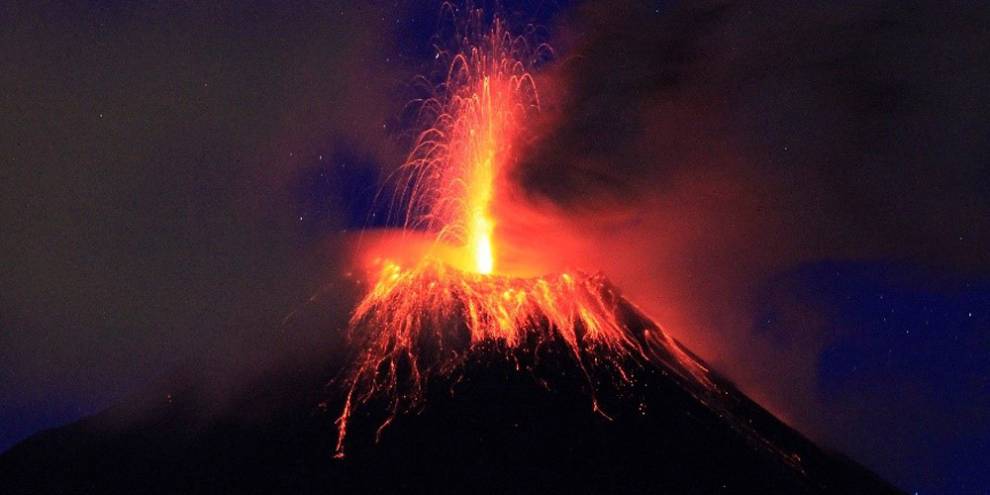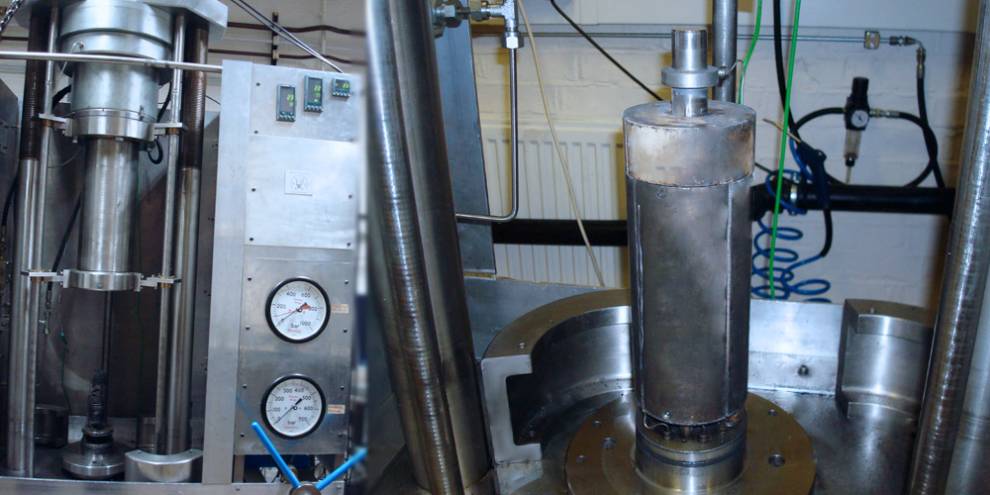Location: OB11A
Telephone Extension:
Laboratory Manager: Dr Liz Gaunt
Many of the natural processes that control the dynamics of volcanic eruptions are obstructed from direct observations. Laboratory experiments and sample characterisation provide a means to better understand and quantify these processes. The physical and mechanical properties of volcanic rocks at high temperatures and low pressures are key properties in the understanding of a range of volcanological problems, in particular how and why transitions in explosivity occur during eruptions.


A high temperature triaxial deformation cell to obtain mechanical strength data on rock samples at temperatures up to 1000ºC and confining pressures up to 70 MPa (30MPa at high temperatures). Attached pore fluid intensifiers provide pore fluids up to 70MPa and the capability to measure permeability at conditions relevant to volcanic conduits. Significantly, the cell uses large cylindrical rock specimens, 25 mm diameter by up to 75 mm long. The large specimen size is necessary to test volcanic rocks with their large crystals and vesicles. Inbuilt acoustic emission transducers allow for real-time logging of acoustic emission events during crack propagation and fluid flow.
Its operating temperature, pressure range and pore fluid capabilities encompasses the conditions of an volcanic rocks hosting magma and the magma itself at equivalent depths of up to 2 km. Deformation in magma and related fluid movement processes can be studied in detail along with the analogue geophysical signals produced.
This apparatus was developed from a high-temperature (700ºC) fracture mechanics apparatus using water/brine or gas as a pore fluid medium (up to 70 MPa) utilizing short rod specimen. This set-up is used to simulate conditions and processes in a volcanic edifice and within lava flows.
 Close
Close

